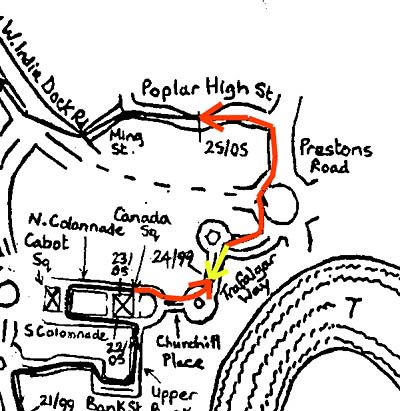
Above: conference between race director and complainant.
We were unable to explain this to the red shirt guy, who became increasingly agitated. Fortunately, he rode on and we saw no more of him, for a while.
Later in the measurement we were informed by a couple of fast-riding bikers that we were sure to have a collision if we rode on the wrong side of the line.
When we had a mile to go I noticed the red shirt guy conferring with a park ranger. Sure enough, when we were a few hundred yards from finishing the measurement the ranger pulled us over. We spent 15 minutes explaining that the race had been approved by the Parks Department and that measurement of the course was part of the package. The ranger told us that she had received a complaint. It seems that the guy who got mad at us for wrong-side riding had been in a bike collision and had been hospitalized.
After 15 minutes of assuring the ranger that we rode slowly on turns, and did not go blindly cannoning about, we were permitted to finish the measurement.

